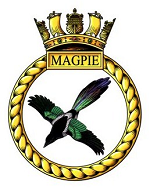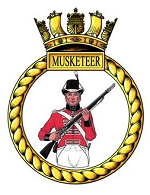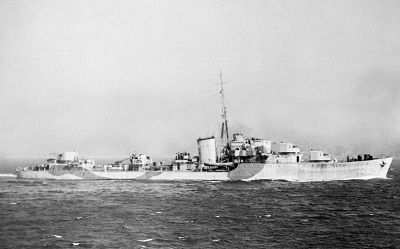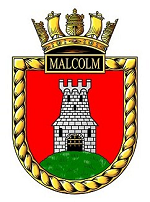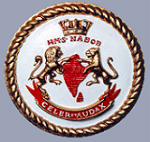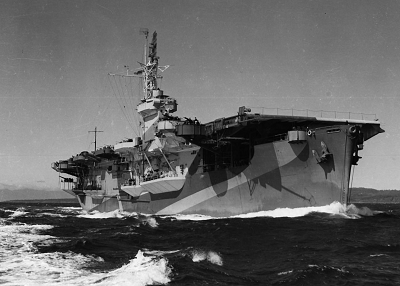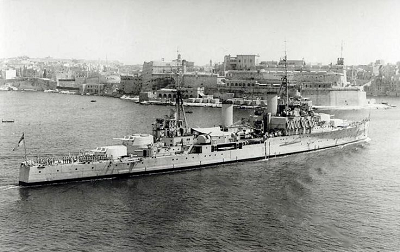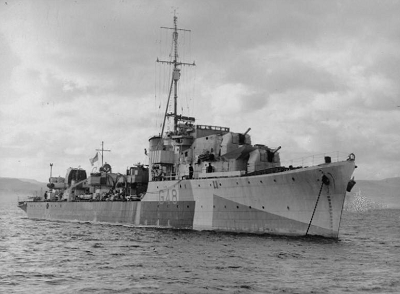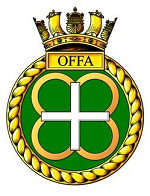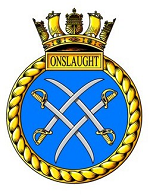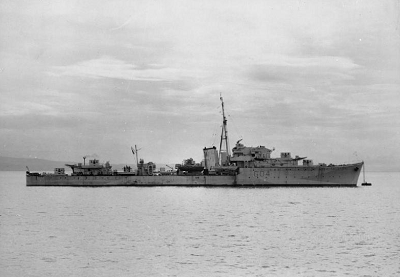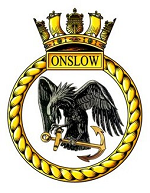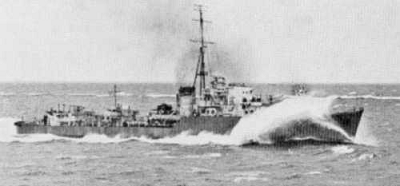ACCNZ Member that served on this ship:
TBC
HMS Nelson (28) was one of two Nelson-class battleships built for the Royal Navy between the two World Wars. She was named in honour of Horatio Nelson, 1st Viscount Nelson the victor at the Battle of Trafalgar. The Nelsons were unique in British battleship construction, being the only ships to carry a main armament of 16 in (410 mm) guns, and the only ones to carry all the main armament forward of the superstructure. These were a result of the limitations of the Washington Naval Treaty. Commissioned in 1930, Nelson served extensively in the Atlantic, Mediterranean, and Indian oceans during World War II. She was decommissioned soon after the end of the war and scrapped in 1949.
She was nicknamed "Nels-ol" from her outline which resembled RN oilers.
Built under the constraints of the Washington Naval Treaty of 1922, the British were allowed two new battleships with 16 inch guns. The design intent was to carry a main armament of 16 in (410 mm) guns to match the firepower of the American Colorado class and Japanese Nagato class on a ship displacing no more than 35,000 tons. Inheriting some of the design of the G3 battlecruisers, all of the 16 in (410 mm) main guns in three turrets were placed forward, the vessel's speed was reduced and maximum armour was limited to vital areas.
The three turrets from forward to aft were "A", "B" and "X". The guns received individual nicknames being known as Happy, Grumpy, Sneezy, Dopey, Sleepy, Bashful, Doc, Mickey and Minnie, sometime after the release of the film Snow White in 1937. The secondary armament was in turrets P1 to P3 on the port, S1 to S3 on the starboard. The six 4.7 in (119 mm) anti-aircraft mounts were designated HA1 to HA6, the even numbers on the port. The six pom-pom mounts were numbered from M1 (on top of B turret) to M7 at the extreme aft—there was no M2 position—the odd numbers 3 and 5 to the starboard.
Nelson was laid down in December 1922 and built at Newcastle by Armstrong-Whitworth. Launched in September 1925, she was commissioned in August 1927 and joined by her sister ship Rodney (built by Cammell Laird) in November. She cost GBP7.504m to build and made partial use of the material prepared for the cancelled HMS Anson and Howe, planned sister ships of HMS Hood.
She was the flagship of the Home Fleet from launch. In 1931 the crews of both Nelson and Rodney took part in the Invergordon Mutiny. On 12 January 1934 she ran aground on Hamilton's Shoal, just outside Portsmouth, as she was about to embark with the Home Fleet to the West Indies.
Nelson was modified little during the 1930s and was with the Home Fleet when war broke out in September 1939. On 25 and 26 September she performed escort duty during the salvage and rescue operations of the submarine HMS Spearfish. Nelson was first deployed in the North Sea in October against a German formation of cruisers and destroyers, all of which easily evaded her. On 30 October she was unsuccessfully attacked by U-56 near the Orkney Islands being hit by 3 torpedoes, none of which exploded. Later she was again shown up for pace in the futile pursuit of German battle cruisers. In December 1939 she struck a mine (laid by U-31) off the Scottish coast and was laid up for repairs until August 1940.
Upon return to service she went to Rosyth in case of invasion[1] and was then deployed in the English Channel. From April to June 1941 she was on convoy escort in the Atlantic. In late May she was in Freetown and was ordered to Gibraltar to stand by to take part in the chase of the German battleship Bismarck.
In June 1941 Nelson, now in Gibraltar, was assigned to Force H operating in the Mediterranean as an escort. On 27 September 1941 she was extensively damaged by a Regia Aeronautica torpedo strike and was under repair in Britain until May 1942. She returned to Force H as the flagship in August 1942, performing escort duties for supply convoys running to Malta. She supported Operation Torch around Algeria in November 1942, the invasion of Sicily in July 1943 and the Salerno operation (by coastal bombardment) in September 1943. The Italian armistice was signed between Eisenhower and Marshal Pietro Badoglio aboard Nelson on 29 September.
Nelson returned to England in November 1943 for a refit, including extensive additions to her anti-aircraft defences. Returning to action she supported the Normandy landings but hit two mines on 18 June 1944 and was sent to Philadelphia, Pennsylvania, for repairs. She returned to Britain in January 1945 and was then deployed to the Indian Ocean, arriving in Colombo in July. She was used around the Malayan Peninsula for 3 months. The Japanese forces there formally surrendered aboard her at George Town, Penang on 2 September 1945.
Nelson returned home in November 1945 as the flagship of the Home Fleet until reduced to a training vessel in July 1946 and decommissioned in February 1948. She was used as a target vessel for bombing exercises for a few months before being scrapped on 15 March 1949 at Inverkeithing.





